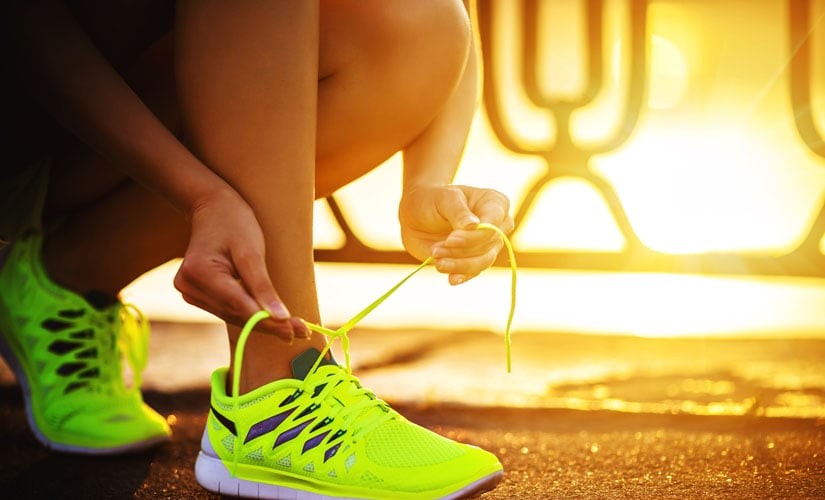
Adapted from Phil Hardesty’s original article
Exercise is vital to our health but exercising in extreme heat and humidity will add extra stress on even those who are the most physically fit. Hawaii’s summers can leave us needing extra hydration, especially with physical activity.
How Our Bodies Respond to Exercise In Heat
Our bodies increase blood flow to the skin in order eliminate excess heat and cool down during exercise. This increase in blood flow, in combination with sweat--another mechanism our bodies use to stay cool--helps to remove excess heat. The heat from the skin is transferred to the droplets of sweat, which allows the heat to evaporate with the sweat. Sweat and a gentle breeze are our best friends when we’re trying to cool down during and after exercise.
The trade off from this process is a decrease in the amount of blood available for exercising muscles. With this change in blood flow, our heart rate increases in order to pump more blood throughout the body during exercise. While we exercise, this increase in heart rate can be a very noticeable way to monitor the heat stress on our bodies.
Under normal conditions, your skin, blood vessels and perspiration level adjust to the heat. But these natural cooling systems may not be enough if you’re exposed to high temperatures and humidity for too long, if you sweat heavily, or you don’t drink enough fluids. The result from our bodies overheating may start slowly but can be deadly if not managed appropriately.
People at the greatest risk of heat related illnesses are:
- Infants and children up to four years of age.
- People 65 years of age or older.
- People who are overweight.
- People who overexert during outdoor work or exercise.
- People with mental illness.
- People who are chronically ill or on certain medications.
Signs of Heat Related Stress and First Aid
| Illness | Symptoms | First Aid* |
|---|---|---|
| Heat stroke |
|
While waiting for help:
|
| Heat exhaustion |
|
|
| Heat cramps |
|
|
| Heat rash |
|
|
* Remember, if you are not a medical professional, use this information as a guide only to help workers in need.
Chart Source: www.osha.gov
Steps to Prevent Heat Related Illness
- Wear Sunscreen
Even in cloudy and overcast conditions sunscreen is a must to protect our skin. Excessive exposure to the sun is a major hazard to people exercising outdoors. Choose natural sunscreens that are safe for you and our ocean’s coral reefs. - New Shoes
It’s important to wear shoes that are specifically made for outdoor exercise. Certain kinds of sneakers have improved tread for road or trail-running in order to stabilize and protect your feet and ankles. Most people will find their outdoor exercise shoes wear more quickly than their indoor shoes, so try to change them regularly.
Signs you need to invest in a new pair of shoes include pain or discomfort from your hips to your feet and moderate to heavily worn tread or worn shoe insoles. Also watch for overly stretched, torn fabric and shoelace eyelets. All of these can compromise the effectiveness of shoes and potentially lead to pain or injury. - Proper Hydration
Exercising in the heat causes your body temperature to rise quickly and remain higher than most indoor gym exercise. This will in turn cause your body to increase its sweat production in an effort to cool you off. Make sure you drink plenty of water to avoid dehydration, help keep your body temperature safe, and keep you feeling good during your workout. - Choose the Right Time of Day
Head outside for your workout in the early morning or later evening when it’s cooler. Try to stay away from concrete and blacktop surfaces, especially after the midday sun has warmed them up. These surfaces will significantly increase your heat exposure especially through your shoes and into your feet. - Dress for the Heat
Invest in a good pair of sunglasses and in cool comfortable clothing that allows your body to breathe and circulate air. If you’re thinking about wearing a hat, consider wearing a visor with an open top. Since we lose a large amount of heat through the crown of our head, wearing a full cap can restrict heat loss and prevent us from staying cool. All these items will help you maintain comfort and increase your performance. - Don’t Forget to Visit the Gym
Respecting the stress high heat and humidity have on your body during exercise and taking the right steps to prevent heat related injuries and illness will allow you to keep exercise both safe and effective during these hot summer days!
What steps do you take to ensure exercise remains safe during the hottest of summer days?
The ‘Ekahi Ornish Program was offered by ‘Ekahi Health—which provides comprehensive community-based care focusing on primary care and prevention and wellness. Learn more about the ‘Ekahi Wellness Program